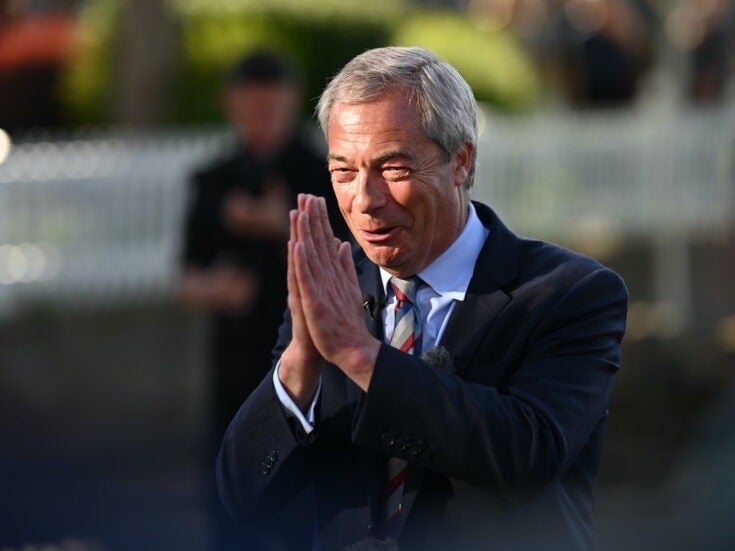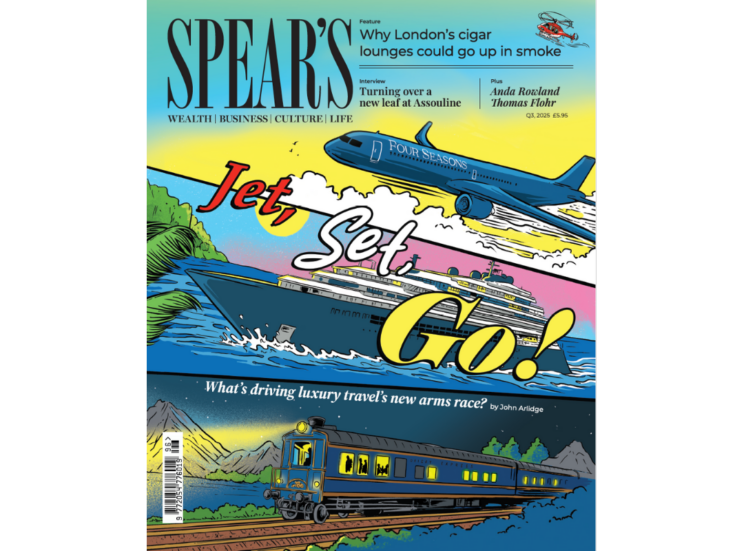Few subjects are taboo for Palestinian artists, with one big exception: working with Israelis, says Sophie McBain
Few subjects are taboo for Palestinian artists, with one big exception: working with Israelis, says Sophie McBain
‘AT ABOUT FIVE years old I started to feel that there is some kind of need for me to say something,’ says Bisan Abu Eisheh.
‘I didn’t have a difficult childhood, as people who’ve grown up in refugee camps or in Gaza, but I was living in a difficult area during the first intifada. I was going to school every day with my mother in an ambulance, because she used to work in the hospital.
‘I used to see all the clashes in the streets, people shooting people, soldiers coming into my house who would take my father to clean the streets. I was a five-year-old kid, and all these things kept in my mind.’
After trying, and then giving up on, poetry, theatre, drama and even a stint studying IT and working for a money-changing company, Abu Eisheh became one of the earliest students to benefit from Palestine’s first accredited art degree course at the International Academy of Art Palestine. The Academy, based in Ramallah, was founded in 2006 with seed funding from the Norwegian government.
For Abu Eisheh, who graduated in 2012, the course proved a springboard for an international career. You might have seen him in the Victoria and Albert Museum a few months ago, when he invited visitors to invent a fictitious identity and make their own ID cards, a play on Palestinians’ daily experience of checkpoints.
He’s now studying at Central St Martins and is one of six artists participating in the Points of Departure project, which will be exhibiting at the ICA as part of London’s Middle East art festival, Shubbak, this summer. The exhibition will be the culmination of eight-week residencies in each other’s countries by three Palestinian and three UK artists exploring themes such as modern nationalism and identity, history and place.
International collaborations like Points of Departure are becoming increasingly common, a sign that Palestine’s art scene is developing rapidly and interest in the region’s art is growing. In recent years Palestine’s troubled and divided territories have played host to a number of exciting and innovative art projects.

Canvassing Support
Picasso has come to Palestine, thanks to the skilled manoeuvring and irrepressibility of the International Academy of Art Palestine’s director, Khaled Hourani.
Hourani devoted two years to negotiations and logistics and battling sceptics to hang Buste de Femme, a Picasso painting valued at £4.5 million, on the wall of his art school in June 2011. The artwork’s journey across continents and through checkpoints became, in itself, a work of art.
Palestine now has its own biennale, which opened in 2012 and is hosted in Qalandiya, a town that shares its name with the infamous Israeli checkpoint separating East and West Jerusalem. Also, Palestinians — spread across Israel, Gaza, the West Bank, neighbouring countries and indeed the entire globe — will soon share their first national museum.
Work on the £7.2 million Museum of Palestine, in Birzeit in the West Bank, is due to finish in 2014. By hosting exhibitions, cultural events and educational programmes, the museum will ‘contribute to linking Palestinians together from all over the world, enabling them to access a platform to express their ideas, thoughts and opinions and represent the Palestinian aspiration, hope and the Palestinian struggle’, the museum’s director, Jack Persekian, told me.
Unsurprisingly, much Palestinian art is a reaction to the Palestinian condition, an exploration of ideas such as marginalisation, identity and exclusion. Features of the Palestinian landscape, checkpoints, walls and refugee camps recur frequently in the works of diverse artists (see artist profiles below).
Artists operating in the Gaza strip have spoken out against restrictions imposed by Hamas on artistic practice, but in cosmopolitan Ramallah, few subjects are off bounds, with one big exception: ‘We won’t work with Israelis in a professional framework,’ says Abu Eisheh.
‘We are not backwards people — we are open to discussions, we are open to speak to each other on a personal basis — but as long as you are Israeli, which means you are representing the state of Israel, which is a country that is occupying our country, these two can’t come together.’
His concern is that professional art collaborations will be used to bolster Israel’s public image. When it comes to individuals, art has, at times, brought Israel and Palestine together — Abu Eisheh cites the number of Israelis who entered the West Bank illegally to visit the Picasso exhibition — but professionally, Israeli and Palestinian institutions remain divided.

No Good Answer
A driving force behind Palestine’s art boom has been the involvement of charities, NGOs and individual philanthropists in Palestine’s art scene, usually motivated by the belief that art has a role to play in Palestine’s politics. At the grassroots, projects like Freedom Bus are offering art as a form of therapy or self-expression for frustrated youths, while higher level projects — like the Qalandiya biennale or the Palestinian Museum — aim to project a different picture of Palestine on the international scene.
One of the most prolific patrons of Palestinian art and culture is the Qattan Foundation. Created by the Jaffa-born businessman Abdel Moshin al-Qattan in 1994, the foundation sponsors educational projects across Palestine, as well as Middle Eastern art, literature and music prizes and festivals, including Qalandiya and Shubbak.
Omar Qattan, secretary of the board of trustees at the Qattan Foundation, says their focus on educational and cultural development reflects their belief that both sectors have historically been underfunded.
‘We also felt that art, education and culture are crucial areas as far as several things are concerned: social emancipation and independence, the ability to think critically, to think clearly and to represent Palestine and the Arab world more confidently, more richly, more diversely, in a more complex and interesting way.’

Abu Eisheh, however, is wary of NGO involvement in Palestine’s art scene. He acknowledges that he partly owes his success to government and NGO arts funding. So when he says that ‘NGOs didn’t shape the art scene, they ruined it’, I’m surprised by the force of emotion in his voice.
‘The art scene was there before the NGOs, and in my view it was more important then, because it was a way of resistance. If you look at the artists of the Seventies, they were doing this because there was something missing, and the artists thought, “We have to fill this space.”’
He worries now that artists are far more likely just to respond to what funders are looking for. ‘Now we have to write a proposal, we write to the British Council, the French Institute, and if the British Council is funding a play it’s a play about Shakespeare, and if the Spanish are funding a play it’s about Lorca. So we’re losing our identity.’
Omar al-Qattan agrees that NGO arts funding can be damaging, but stresses that the Qattan Foundation, by being privately funded, is able to avoid many of these pitfalls. He also says that the organisation is careful not to be prescriptive when grant-making, and that there’s an emphasis on reaching individuals in more remote locations, and on ensuring that juries for arts prizes are international, independent and work transparently.
Persekian is more laid-back about the influence of NGOs on Palestine’s art scene, arguing that there’s little difference between an artist producing work in response to a project proposal or to market demand.

Art Market
What is clear when examining Palestine’s cultural revival, however, is that in this part of the world, everything is political. What differs is simply the subtlety of the message, the ease or multiplicity of interpretations. The more sophisticated projects — often supported by the more sophisticated patrons — are a welcome departure from the black and white picture of the Palestinian struggle painted by politicians and pundits, and are all the more fascinating for it.
When selecting participants for Points of Departure, for instance, Aaron Cezar, director of the Delfina Foundation, which organises residencies for artists in the UK and is supporting the project, says that an emphasis was placed on finding artists who were open-minded about the Palestinian question: ‘You quite quickly get an idea about whether they’re a complete activist, or whether they are going to encounter Palestine in a more open kind of way.’
At a time when the bloody conflict in Syria threatens to inflame sectarian divisions across the Middle East, London’s Shubbak festival will offer a less hysterical, more nuanced and multifaceted picture of the region and its people. The Palestinian exhibition, Points of Departure, will no doubt be just that.
shubbak.co.uk
ART OF THE STATE
Rula Halawani
The former photojournalist’s powerful images are
themed under titles like Negative Incursion, an exhibition of haunting war photographs made all the more so because they are presented as negatives.
Wafa Houraini
His 3D models depict a futuristic vision of refugee camps 100 years after the Palestinian exodus (2048),
the six-day war (2067) and
the first intifada (2087).

Khaled Jarrar
Jarrar made Football (above) using concrete cut from the wall separating Israel and
the West Bank. His show at Ayyam Gallery in London
runs until 3 August.
Jawad Al Malhi
Al Malhi uses painting, photo, video and installation to explore life within refugee camps.
Tarzan and Arab
Identical twins Ahmed and Mohamed Abu Nasser grew up in Gaza — where there is not one cinema. They design film posters based on Israeli operations and have produced short films on Gaza, winning the Qattan Foundation’s Young Artist of the Year prize in 2011.
Don’t miss out on the best of Spear’s articles – sign up to the Spear’s weekly newsletter







